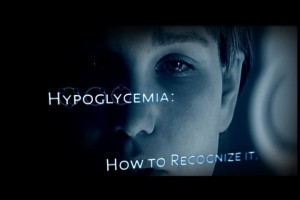Hypoglycemia, a medical condition characterized by abnormally 
Glucose is the main energy source of the body. It comes from breaking down carbohydrates from food into smaller molecules. Glucose is directly absorbed into the bloodstream and enters the body’s cells. When a person skips meals, insulin is still released, therefore glucose is still removed from blood, thus lowering glucose levels in the blood.
Hypoglycemia Causes
Majority of cases of hypoglycemia befall in adults with diabetes mellitus. There are many causes for hypoglycemia. Some of the common causes include the following:
- Skipping meals
- Overmedication with insulin or other antidiabetic medications (for diabetics)
- Certain medications non related to diabetes
- Severe infection
- Kidney failure
- Liver failure
- Congenital, genetic defects
- Tumors
- Alcohol abuse
Hypoglycemia Symptoms
It is important to recognize symptoms of hypoglycemia in order to administer proper treatment right away. The following symptoms may go away almost instantaneously after eating sugary foods.
- Trembling and weakness
- Nervousness
- Extreme hunger
- Nausea
- Sweating
- Blurred vision
- Dizziness and headache
- Palpitations
If symptoms are untreated and continue to drop below 40 mg/dL, behavior may begin to change. These are characterized by:
- Confusion
- Irritability
- Having a hard time to concentrate
- Slurred speech
- Incapability to stalk or walk properly
- Twitching muscles
- Mood swings
Severe cases of hypoglycemia, which are defined by low blood sugar levels of below 20 mg/dL include:
- Convulsions
- Unconsciousness
- Stroke
- Death
HypoglycemiaDiagnosis
Hypoglycemia is diagnosed in accordance of presence of the three key features, also known as Whipple’s triad. These include:
- Symptoms consistent with hypoglycemia,
- Low plasma glucose concentration, and
- Alleviation of symptoms after raising plasma glucose levels
Hypoglycemia Treatment
Hypoglycemia is treated by restoring blood glucose levels to normal. This can be done quickly and easily by the following steps. Though these hints should not serve as medical advice, nor should replace first aid and CPR courses.
- Eat 15 to 30 grams of carbohydrates. Some of these examples include:
- Twelve gummy bears
- One tablespoon sugar in water
- Half cup of apple juice, orange juice, regular soda, fat free milk, etc.
- One small apple, orange, etc.
- If there is an underlying cause, treatment will be given for this.
Low blood sugar levels in the body should be treated immediately to prevent further decrease of glucose levels. It is highly recommended for diabetics and those who live with diabetics to take first aid training and CPR courses, in cases hypoglycemia and other diabetes-related emergencies may occur.
